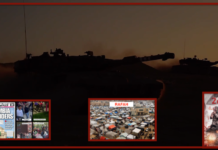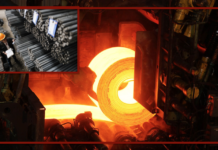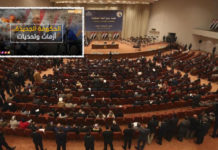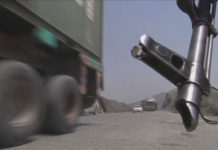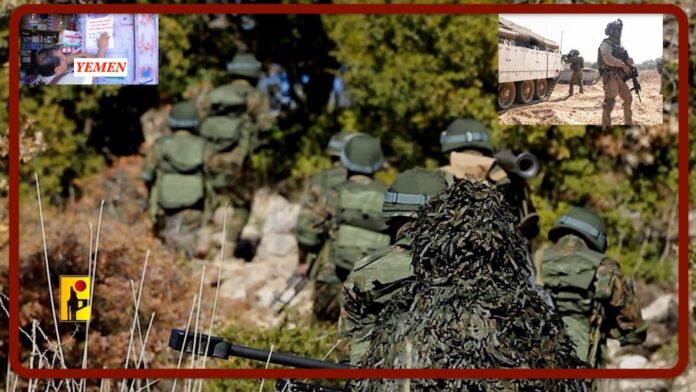
EU High Representative for Foreign Affairs and Security Policy Josep Borrell says: “We need to start talking seriously about a two-state solution, it is clear that the way Israel is trying to destroy Hamas is wrong.”
The European Union presents a ten-point plan for peace between Israelis and Palestinians. In separate talks held yesterday in Brussels, the European Union’s foreign ministers with Israel and the Palestinian authorities presented the ten-point plan for peace between the two sides. We await the evolution of the situation. Belgian Foreign Minister Hadja Lahbib said that the conflict will not be resolved with weapons in the Gaza Strip and that the violence must end.
According to the New York Times: “Israel is unlikely to defeat Hamas in the short term.” An analysis by Thomas Friedman states that the prevailing opinion in America and among the Israeli military is that Tel Aviv is far from defeating Hamas.
According to the NYT, Israeli plans envisaged: “control of the cities of Khan Yunis and Rafah by the end of December. Clashes are still underway in Khan Yunis”. “Release of hostages and exchanges with detainees”, the process is currently completely blocked.
And regarding the abductees, the families of Israeli prisoners held by the resistance repeat: “Now, now” after storming a Knesset meeting, in reference to their demands to immediately conclude an exchange agreement. While according to the Israeli media, Benjamin Netanyahu, Prime Minister of Israel, during his meeting with representatives of the prisoners’ families declared: “There is no real proposal from Hamas, but instead there is an initiative on our part, and I won’t go into details.”
According to the Wall Street Journal, the United States, Egypt and Qatar are promoting a comprehensive plan to free the abductees and end the war, with a focus on the withdrawal of IDF forces from Gaza. The publication underlines that at this stage there is no reaction to this step from Israel and Hamas, but the very fact that contacts take place after a long period of separation is a positive sign. Egypt says Israel has so far refused to discuss a complete end to the war.
Negotiations on the release of prisoners in the Gaza Strip remain at an impasse; Israel does not agree with Hamas’ call for a permanent ceasefire, NBC News reported, citing an anonymous diplomat. The parties are said to have managed to agree on “some mechanisms” for the possible exchange of hostages for Palestinian prisoners, but Israel’s position does not allow for an agreement to be concluded.
Even on the subject of strategic planning on the front, Israel does not seem to have clear ideas: Israeli minister Ofir Sofer doubts Israel’s ability to “achieve victory over Hamas, in accordance with the declared objectives of the war”, and speaks of an Israeli mistake in opening the northern front in the early stages of the war. While Defense Minister Yoav Galant told his French counterpart: “No ceasefire in Lebanon until the settlers have returned to their homes.” On January 22, the Israeli minister then said: “Even if Hezbollah stops shooting unilaterally, Israel will not stop shooting until it guarantees the safe return of northern residents to their homes after the security situation at the border has changed.” .
At the moment, Israel is still trying to avoid a war in Lebanon as long as it fights in Gaza. In the meeting, Gallant underlined the important role of the international community in stabilizing the security situation on the northern border, as part of the political effort led by the US administration.
Tension is also skyrocketing in the Red Sea: on December 20, the Houthis posted online a video of the Houthi missile hitting the Greek ship Zogfaria off the coast of Yemen on January 16. Also on December 20, the US-British Coalition attacked Sanaa and Hodeidah.
Meanwhile, disruptions to transit across the Red Sea are increasingly affecting international trade flows. According to the International Monetary Fund’s PortWatch platform, transit volumes through the Suez Canal this year through January 16 fell by about 37% compared to the same period last year. Bloomberg says sea shipping prices rise in light of tension in the Red Sea.
Ships that have to pass through the Red Sea, and do not carry goods for Israel according to a Cairo Channel report, hold up a sign that reads: “We have no relationship with Israel with the Yemen’s insistence on targeting ships headed to Israel in solidarity with Gaza.” And it is with this sign that, for example, ships flying the Indonesian flag passed without accidents over the weekend.
Since January 21, reports have spread that the Houthis are laying a large number of mines in the Red Sea to deter a possible naval attack by the United States and the United Kingdom. The recent collision between two Royal Navy mineral exploration vessels has complicated the task of clearing sea mines.
Meanwhile, northern Yemen is preparing for war, other tribes have declared their willingness to fight the American invasion in Yemen, allying themselves with the Houthis.
The second phase of the campaign to boycott Israeli and American products also begins on January 22nd: the governor of Hodeidah, Muhammad Ayyash Qahim, and the deputy undersecretary of the Governorate, Ali Kabari, inaugurated the second phase of the campaign on January 22nd. boycott of Israeli and American products as part of the national campaign in support of Al-Aqsa and the Palestinian people. The same thing happened in the Al-Maraw’a district of Hodeidah, the campaign has the slogan: “Boycott is an effective weapon”.
Iranian Foreign Ministry spokesperson Nasser Kanaani confirmed that the lack of security in the region is the result of what we have witnessed in Gaza over the past 108 days, stressing that it is time for these countries to once again put pressure on Israel and prevent it from continuing the war.
IDF sappers blew up “five Hamas buildings” in the coastal area using 2 tons of explosives. Numerous videos sent online by the IDF showing the new tunnels discovered in the areas previously under the control of Hamas.
And now the situation on the front updated at 4:00 pm on January 22nd.
Sporadic clashes and heavy bombing of urban buildings continued in the northern Gaza Strip. The Gaza Municipal Building, one of the oldest structures in the city, suffered significant damage. On January 22 they bombarded a supply line and an Israeli vehicle route east of Jabalia with a barrage of mortar fire. Israel responded with shelling that resulted in ongoing fires in northern Gaza within the Jabalia camp.
In the area of the isthmus between the northern and southern parts of the Gaza Strip, the Israelis strengthened their assault around al-Bureij. The IDF presence in the area is limited and aims to further clear the area.
In Khan Yunis, Israeli troops advanced and reached a training site for Hamas militants. The site is located 500 meters from Nasser Hospital, one of the main Israeli targets in the city. Israel appears to be deploying more than 9 brigades in the ongoing battles in Khan Yunis, which are the largest since the start of the ground war in the sector. Strong resistance encountered by the Israeli army which suffered at least two major ambushes east of Khan Yunis on the 22nd.
At the same time, attacks continue in Rafah, the only city in the Gaza Strip to remain intact. However, the Israelis will soon take action here too to take control of the Philadelphia corridor.
On Israel’s northern border, Hezbollah militants continue to launch attacks on border crossings and IDF military bases. Israeli forces continue to massively bomb targets throughout southern Lebanon; on the morning of the 22nd the Sheheen village was hit by Israeli air raids.
In the Red Sea region, the Houthis fired anti-ship missiles at the American tanker Chem Ranger. It was reported that the ship was destroyed, but the American command did not confirm this information.
Antonio Albanese e Graziella Giangiulio



